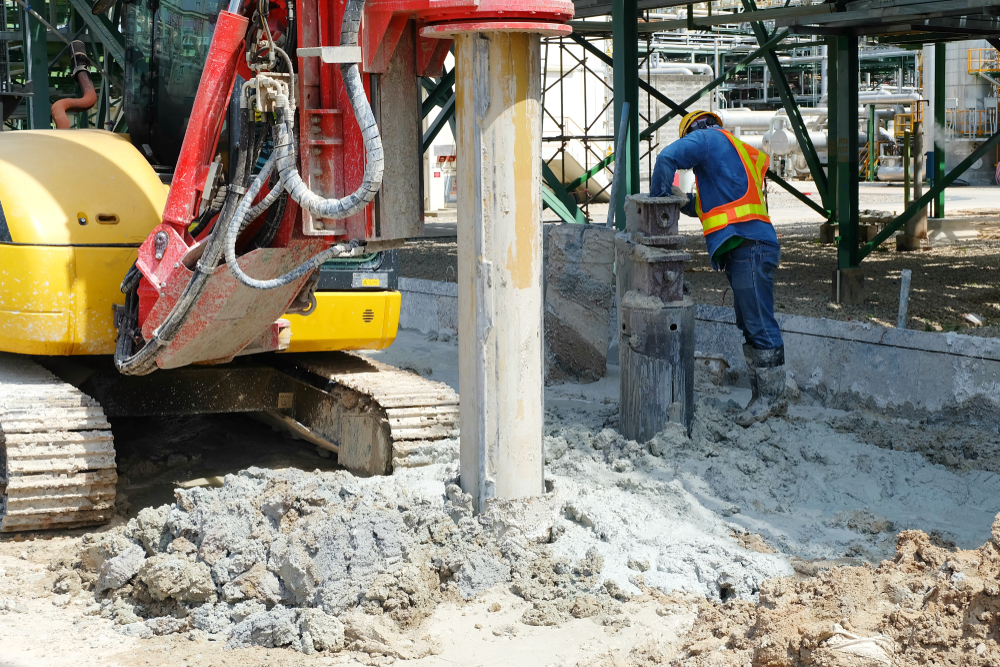The Advancement of Civil Consulting Engineers in the Modern Age
The Advancement of Civil Consulting Engineers in the Modern Age
Blog Article
The Important Contributions of Geotechnical Designers in Analyzing Dirt Habits and Foundation Style for Lasting Infrastructure Advancement
Geotechnical engineers offer as a keystone in the world of lasting facilities advancement, where their expertise in examining dirt habits straight affects the safety and security and long life of frameworks. By utilizing advanced methods such as Standard Infiltration Tests and Cone Infiltration Screening, they diligently review dirt residential properties, leading to notified decisions on structure style.
Role of Geotechnical Engineers

Along with site examinations, geotechnical engineers examine prospective dangers such as soil liquefaction, slope stability, and groundwater concerns. They apply advanced design concepts to develop solutions that minimize these dangers, making certain that styles follow pertinent codes and standards. Their work frequently involves cooperation with other design disciplines, architects, and environmental researchers to produce integrated approaches to framework growth.
Furthermore, geotechnical engineers add to lasting practices by advertising the usage of materials and methods that decrease ecological influence. Via their comprehensive understanding of soil technicians and geology, they play a vital duty in fostering secure, resilient, and sustainable infrastructure that meets the needs of society while shielding the environment.
Dirt Habits Assessment Techniques
Comprehending soil habits is fundamental to educated decision-making in geotechnical engineering, as it directly influences the design and building and construction processes. Different assessment strategies are employed to examine dirt buildings, making certain accurate predictions of its efficiency under different loading problems.
One primary method is the Standard Infiltration Examination (SPT), which gives understandings right into soil density and consistency through the resistance experienced throughout infiltration. Similarly, Cone Infiltration Testing (CPT) uses a continuous account of soil stratification and in-situ strength specifications, enabling a more comprehensive understanding of subsurface conditions.
Research laboratory tests, such as Atterberg limitations, unconfined compressive toughness, and triaxial tests, are necessary for characterizing dirt behavior under regulated problems. These tests help with the resolution of important parameters, including shear strength, permeability, and compressibility.

Foundation Layout Concepts
Foundation design concepts are essential for guaranteeing the security and longevity of frameworks, as they dictate how lots are transmitted from the superstructure to the underlying soil. These principles incorporate numerous considerations, including load-bearing capability, settlement, and side security. A comprehensive understanding of soil auto mechanics is essential for geotechnical engineers to evaluate the interaction between the foundation and the dirt.
One secret concept is the proper selection of foundation kind, which may consist of superficial foundations, such as spread footings, or deep foundations, like caissons or piles, depending upon dirt conditions and architectural lots - geo tech engineering. The foundation should be created to decrease differential settlement, which can bring about architectural damages

Sustainable Infrastructure Practices
Exactly how can we properly integrate sustainability into framework methods? Sustainable framework methods begin with thorough website analyses, which evaluate dirt actions, neighborhood environments, and resource schedule.
Additionally, employing cutting-edge building strategies, such as making use of recycled products and low-impact structures, considerably reduces the carbon impact of facilities tasks. Geotechnical engineers play a pivotal role in selecting proper materials that boost longevity and sustainability, such as utilizing geo-synthetics to enhance dirt stability and minimize disintegration.
In addition, lasting framework methods require recurring tracking and maintenance to guarantee that frameworks stay resistant over time. Ultimately, these techniques not only contribute to the geotechnical industry long life of frameworks however also promote a healthier atmosphere, aligning infrastructure development with wider sustainability objectives.
Study and Applications
Case researches in geotechnical engineering offer important insights into the sensible applications of dirt behavior and lasting facilities practices. One remarkable example is the building and construction of the Burj Khalifa in Dubai, where substantial dirt testing and evaluation were carried out to examine the special difficulties postured by the region's loosened sand and high water table. Geotechnical engineers used advanced strategies such as vibrant penetrating and cone infiltration testing to determine the soil's load-bearing capacity, inevitably bring about the design of a deep structure system that sustains this iconic structure.
An additional crucial situation is the remediation of the San Francisco-Oakland Bay Bridge after the 1989 Loma Prieta quake. Geotechnical assessments disclosed the need for dirt stabilization methods, consisting of grouting and dirt nailing, to enhance the seismic resilience of the foundation. These treatments not just improved the bridge's safety yet additionally added to its longevity and sustainability.
Such study exemplify exactly how geotechnical engineers play a vital role in comprehending dirt habits and applying cutting-edge options to make certain the architectural honesty and sustainability of facilities click here to find out more jobs. geotechnical industry. Their expertise is crucial in attending to the facility tests positioned by various soil problems across varied geographical places
Conclusion
Finally, the contributions of geotechnical engineers are important for the analysis of dirt behavior and the layout of foundations, which are crucial for sustainable framework growth. Via the application of sophisticated screening methods and innovative materials, these specialists make certain the security and security of frameworks while reducing environmental influences. The integration of sustainable methods advertises strength in infrastructure projects, highlighting the significance of cooperation amongst stakeholders to attain efficient building and construction solutions that satisfy both environmental and societal demands.
Geotechnical engineers serve as a foundation in the realm of sustainable facilities development, where their experience in examining soil behavior straight affects the safety and long life of frameworks.Geotechnical engineers play a vital function in the layout and building and construction of infrastructure by analyzing soil and rock habits to guarantee security and safety. A thorough understanding of soil mechanics is essential for geotechnical designers to examine the interaction between the soil and the foundation.
Geotechnical analyses exposed the requirement for dirt stablizing methods, including grouting and soil nailing, to enhance the seismic durability of the foundation.In conclusion, the contributions of geotechnical designers are important for the analysis of dirt behavior and the design of structures, which are crucial for sustainable infrastructure advancement.
Report this page